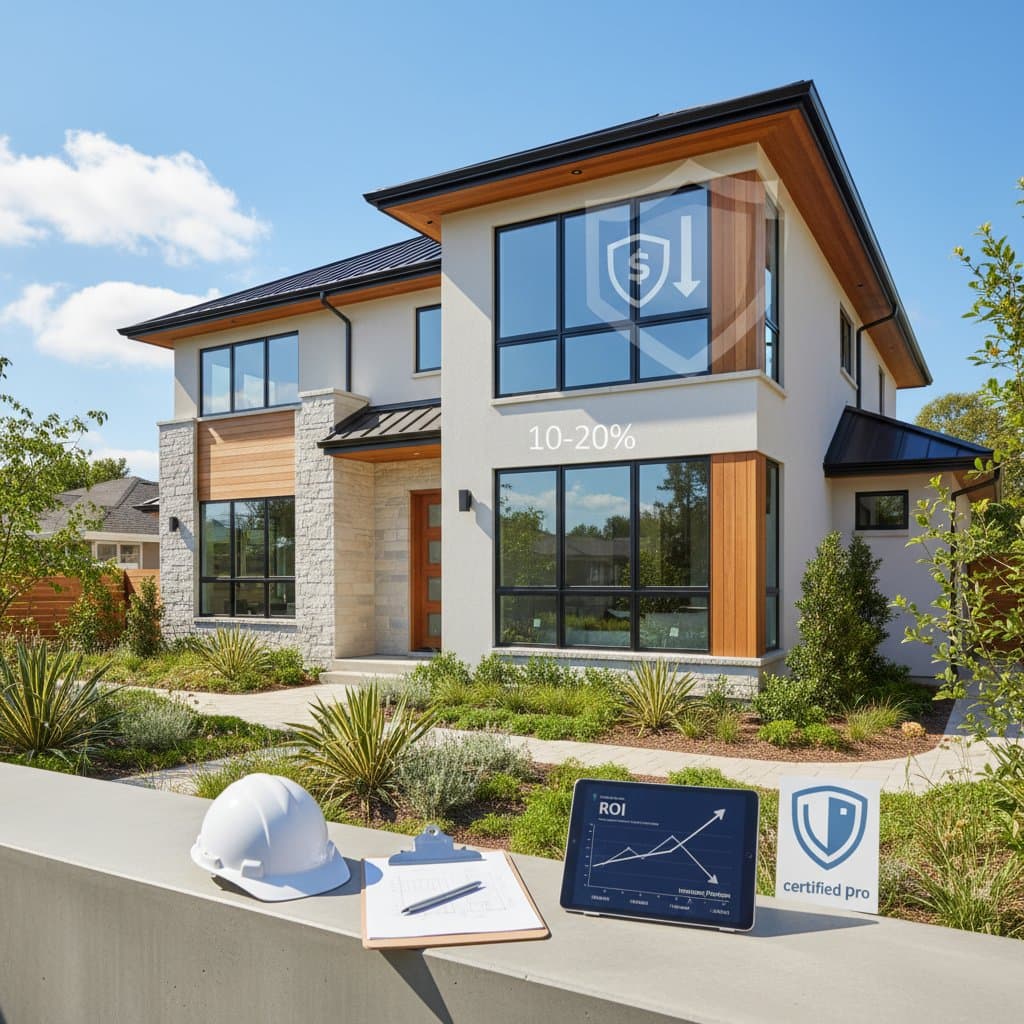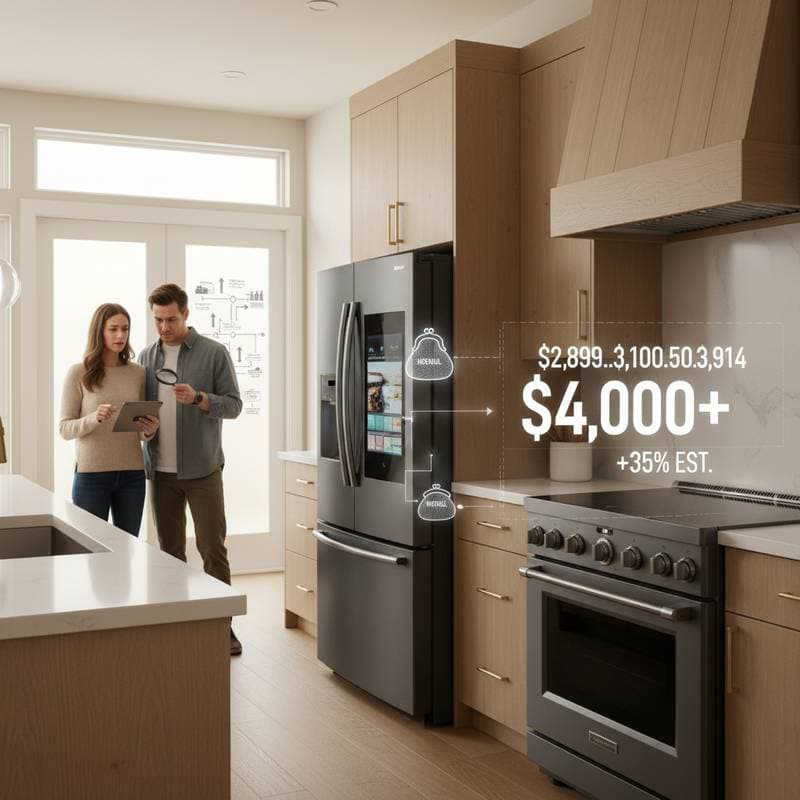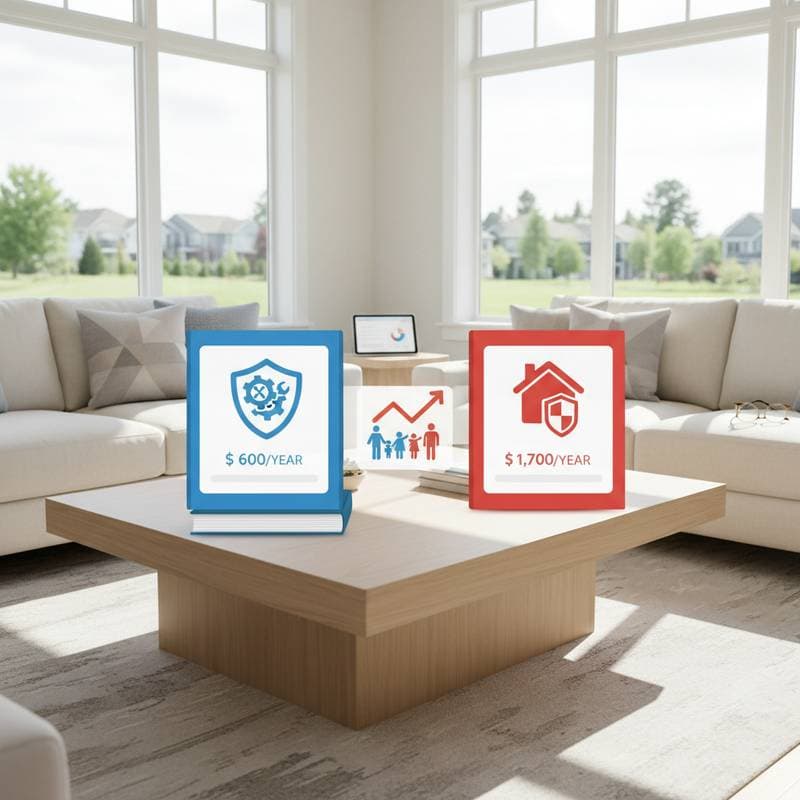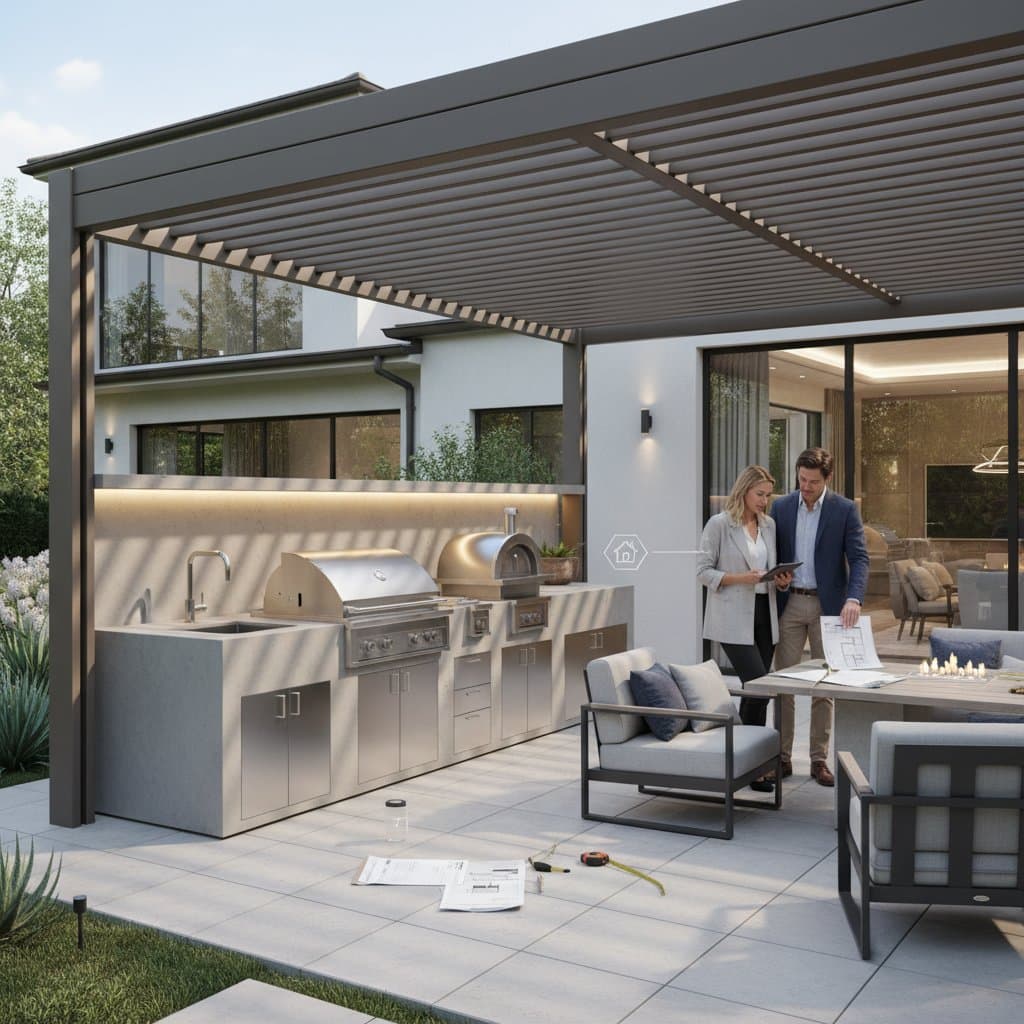Storm-Proof Windows: ROI Gains and 2025 Insurance Savings
Summary Box
National average cost: $17,000 for a full home replacement
Typical range: $9,500 to $28,000
Low end and high end: $700 per window for basic units, up to $2,800 for premium laminated glass systems
Time to complete: 3 to 6 days for an average home
DIY or Pro: Licensed professional required for most installations due to structural and code requirements
ROI or resale impact: 65% to 75% return on investment, plus ongoing insurance savings where approved
Updated: February 2025
Cost Factors
Several elements influence the total expense of installing storm-proof windows. Homeowners should evaluate these to budget accurately.
- Scope and size: Larger homes with numerous window openings or nonstandard dimensions incur higher costs. Custom shapes, such as arches or expansive picture windows, elevate both material and labor expenses.
- Material grade and finish: Vinyl frames offer the lowest price point and require minimal maintenance. Aluminum and composite options provide superior corrosion resistance, ideal for coastal environments, while wood-clad frames deliver aesthetic appeal at a premium, demanding additional sealing treatments.
- Glass specification: Laminated glass, featuring an interlayer that prevents shattering, forms the core of storm-proof systems. Enhanced wind ratings, low-emissivity coatings for energy efficiency, and impact-resistant films increase costs yet enhance safety and utility bill reductions.
- Site conditions: Properties with multiple stories or limited access necessitate scaffolding, cranes, or extended labor, driving up fees. Sloped terrain or urban settings can further complicate logistics.
- Labor market and season: Rates peak during hurricane-prone months due to demand surges. Off-season scheduling, typically winter in non-freeze zones, yields lower bids and shorter timelines.
- Custom work and change orders: Modifying rough openings, integrating smart features, or selecting ornate trim can add $200 to $500 per window.
Strategies to Reduce Costs Effectively
Homeowners can minimize expenses while maintaining quality through targeted approaches. These steps ensure value without compromising protection.
- Obtain multiple quotes: Secure bids from at least three licensed contractors, specifying identical materials, scope, and post-installation cleanup to enable fair comparisons.
- Negotiate volume discounts: Full-home replacements often qualify for reduced per-unit labor rates, as crews streamline processes across multiple openings.
- Select balanced glass options: Mid-tier laminated glass meets stringent wind-load standards in most areas, avoiding the premium markup of custom architectural grades.
- Time installations strategically: Book during low-demand periods to benefit from discounted rates and expedited service availability.
- Combine with complementary upgrades: Integrate window work with reinforced doors or roof assessments to maximize insurance premium reductions in one project phase.
- Pursue available incentives: Research utility programs and government rebates for Energy Star-certified glazing, which can offset 10% to 30% of costs in qualifying regions.
Regional Considerations
Local climate, regulations, and incentives shape the necessity and benefits of storm-proof windows. Tailor choices to specific geographic demands.
- Gulf and Atlantic coasts: Strict codes mandate impact-rated windows or equivalent protections. Insurers here provide the largest discounts, often 15% to 25% on premiums.
- Midwest tornado zones: Laminated glass withstands debris impacts effectively, though not always code-mandated. Consult wind zone maps from local authorities to assess needs.
- Inland regions: Even without severe weather risks, these windows enhance burglary resistance, dampen street noise, and elevate property appeal for buyers.
- Arid or high-altitude areas: Focus on UV-protective coatings and argon gas fills to optimize insulation and solar control, prioritizing energy performance over pure wind resistance.
Project Timeline and Coordination
Efficient planning prevents overruns and ensures seamless execution. Understanding key phases helps set realistic expectations.
- Material procurement: Expect 3 to 8 weeks for delivery, varying by frame type and glass specifications. Custom configurations extend this to 10 weeks or more.
- On-site installation: Professional teams typically require 2 to 6 days for a standard single-family residence, depending on window count and complexity.
- Inspection milestones: Schedule a preliminary review of rough openings and framing prior to fitting. Conduct a final walkthrough to verify seals, operation, and adherence to building codes.
Weather interruptions or supply chain issues represent common delay sources. Maintain regular updates with your contractor to adjust schedules proactively.
Securing Lasting Protection and Value
Storm-proof windows fortify more than individual panes; they safeguard the home's structural integrity against wind pressures and flying objects. This upgrade diminishes risks of water intrusion, roof damage, and costly repairs during extreme events.
The initial investment, though significant, recoups through substantial insurance reductions and energy efficiencies. In 2025, anticipate 10% to 20% premium cuts in high-risk areas, alongside a 65% to 75% ROI via resale enhancements.
To proceed confidently, collect itemized proposals, confirm compliance with local ordinances, and validate contractor certifications through state licensing boards. Retain all records for insurance claims and future appraisals. Certified installation transforms this enhancement into a reliable asset, delivering enduring security and financial advantages for your property.



